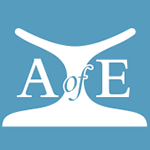

The description of the site is taken from Naville's 1887 volume and shows that he was moving over an large area investigating places where monumental architecture was known to exist. The first site is descibed in the exavcation volume as existing 3 kilometres towards the north-east of the station of Fakoos, near to a village called Khataanah. He excavated in a temple enclosure, with a deep 3 metre songage next to a sphinx statue where there were large urns filled with burnt debris and bones. Surrounding these urns was a selection of black-top ware, scarabs, two bronze knives and flints.
Naville then moved to a different place on the site where two years before a monumental doorway had been uncovered by local Egyptians digging for sebakh. Although limited by the water-table and the surrounding houses, Naville excavated to the pavement level. The columns were inscribed with the names of Amenemhat I, Amenemhat III, and Senusret III. A granodiorite statue of a queen was found.
He then moved to the north of the site to a mound called Tell Aboo el-Feloos which only yielded Roman pottery.
Finally, Naville went almost 5 kilometres to the north to the village called Kantir and investigated a Rameses II inscribed column base. He concluded there was an important building located there but could not excavate because it would destroy the crops. He also was shown inscribed stones by a local govenor, which he attempted to buy but was refused.
A piece of faience (?) vessel with cartouche of Sety went to the British Museum.
Naville 1885a and b.
Links
[1] https://egyptartefacts.griffith.ox.ac.uk/resources/egypt-exploration-fund-eef
[2] https://egyptartefacts.griffith.ox.ac.uk/people/henri-edouard-naville
[3] https://egyptartefacts.griffith.ox.ac.uk/node/1147